Guanqiao
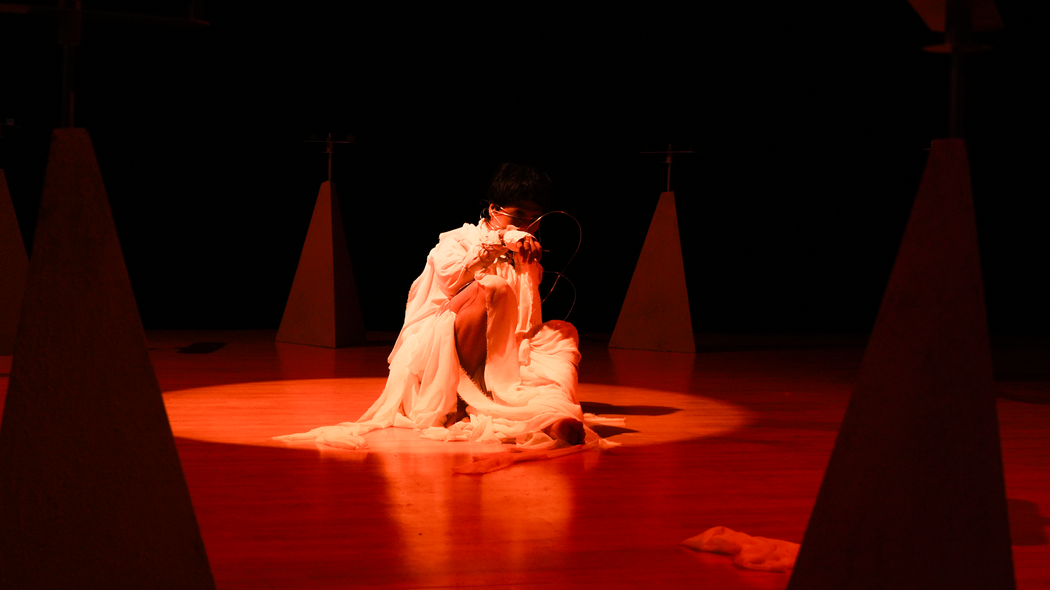
Your work moves between performance, installation, and personal narrative. How did this interdisciplinary approach develop, and what does it give you that a single medium cannot?
I started from performance practice, but along the way I gradually realized that the body alone was not enough to carry the complexity of what I wanted to express. The integration of installation, sound, and space allows me to construct a more complete atmosphere. In fact, the elements I use always emerge quite organically—they are not imposed but necessary. This approach enables the audience not only to see an action, but to enter a constructed time-space. Working across disciplines gives me the ability to address themes that cannot be fully articulated through a single medium—especially those related to intimacy, memory, and identity.
What was the first spark or memory that led to the creation of Moonrise Sunset?
The work began with reflections on time and relationships. The first spark actually came from a very uncanny experience of intimacy—a relationship that I am not even sure should be called intimacy. One evening in Miami, I witnessed the sun setting while the moon was rising at the same time. That overlapping moment made me realize how similar natural cycles are to human emotions—always intertwined with alternation, overlap, and absence. I asked myself: what is the rhythm that belongs to Guanqiao? I still do not know. But one thing I do know is that love does not seem to follow this rhythm.
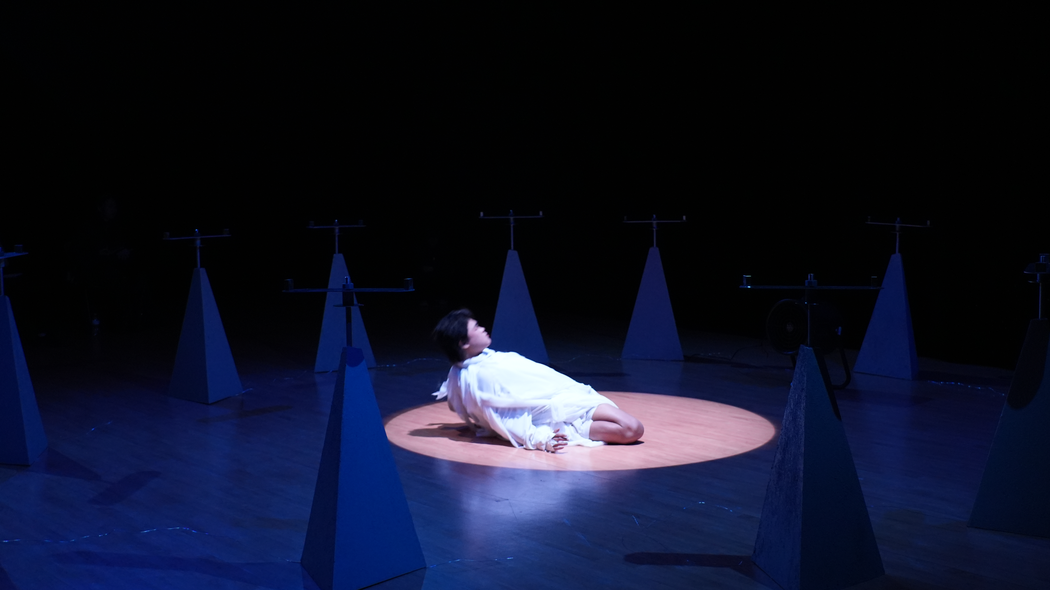
The work draws on the cyclical rhythms of nature as a metaphor for human relationships. How do you translate natural cycles into movement, sound, and spatial design?
I use repetition and breathing rhythms to construct movement, letting the body ebb and flow like tides. In sound, there is a background layer that has been processed from intimate recordings—my own voice with “that man” in bed. At the center of it all are the twelve magnetic devices: magnets of the same pole are placed on top of each device, repelling the magnet I hold in my hand. This repulsion sets them into rotation, creating a cycle with no end—like sunrise and sunset, like moonrise and moonset, always in motion, never fixed.
In space, these devices are arranged to form a rhythmical order. Fans generate airflow that moves the fabrics and carries sound, reinforcing the sense of endless circulation. My body follows the same repetitive rhythm, echoing the motion of tides. Together, these elements create a natural cadence that does not ask the audience to “understand,” but instead to feel.
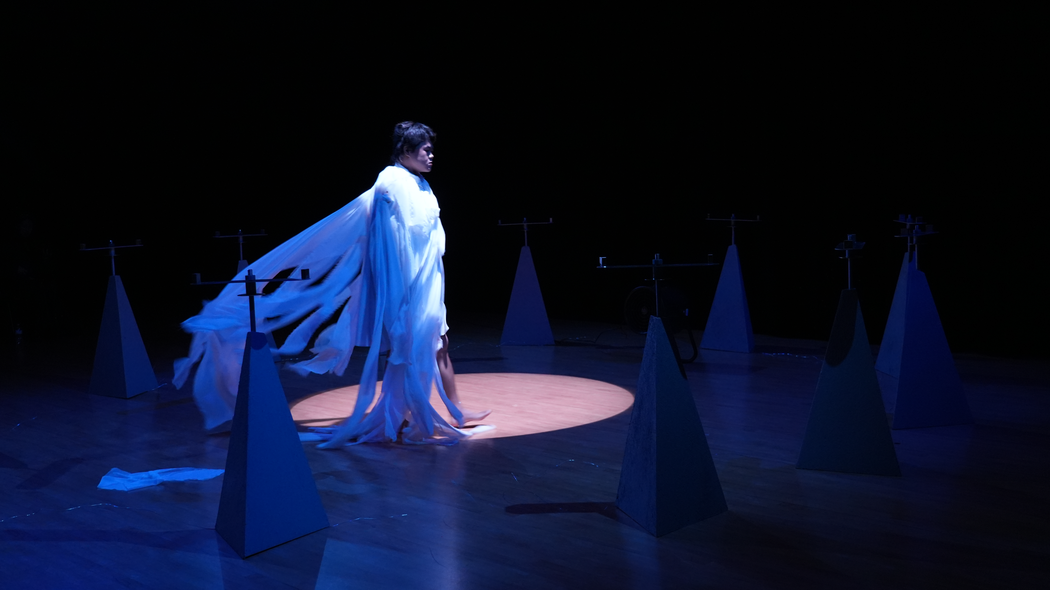
The performance resists a fixed narrative. How do you guide the audience’s emotional journey without a traditional storyline?
I believe emotions are not carried forward by linear storytelling, but evoked through atmosphere and sensory experience. Rather than following a plot, the audience breathes with the energy, rhythm, and tension of the space. The core tension comes from the magnetic devices themselves—their spinning is both beautiful and unsettling. They refuse closeness, yet maintain connection.
Meanwhile, the tension between materials—the pull of the wires, the drifting of fabrics, the airflow from the fans—constantly reminds the audience that what they are witnessing is an event that could shift at any moment. This way, the audience can let go of narrative expectations and instead project their own experiences, memories, and emotions into the work, finding their own resonance within a wordless atmosphere.
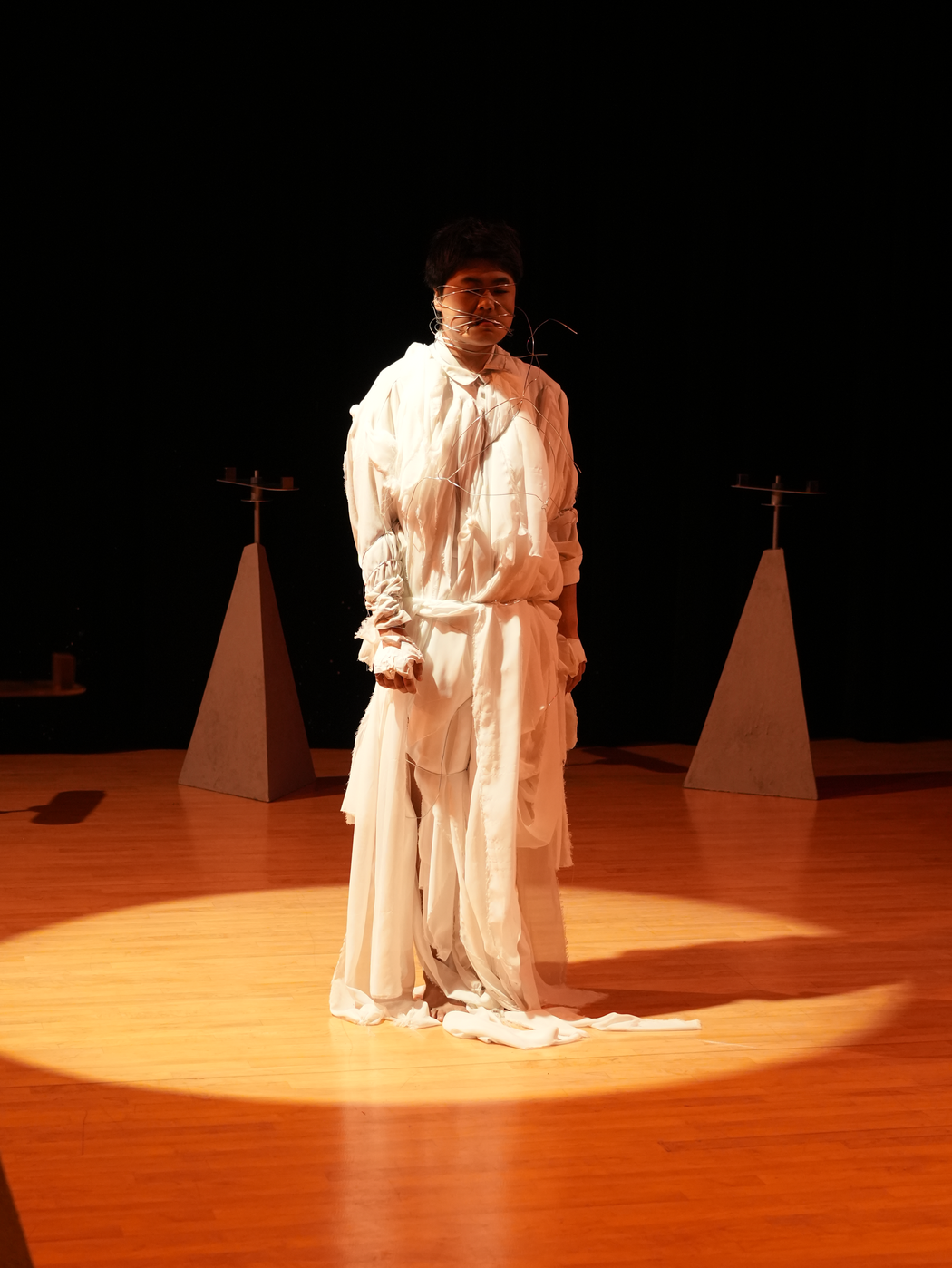
How do the materials—fabric, steel wires, oscillating fans—shape or even challenge your own movements during the performance?
All these materials ultimately serve the magnetic devices. The pull of the steel wires often forces me into stillness; the fabrics drift in the airflow, echoing the rotation of the devices; the fans themselves generate both air and sound. They continuously disrupt my sense of control, putting my body in a state that can always be interrupted. This challenge makes me realize that the core of the work is the relationship between human and environment, between human and object.
What role do improvisation and chance play during your performances?
Moonrise Sunset is almost entirely pre-designed. I try to keep every element within my control, from my movements to the operation of the devices, so in a strict sense, improvisation barely exists in this work.
But I do believe that in performance there is something like an “aura” that cannot be rehearsed or planned. No matter how much I prepare in advance, the atmosphere of the live event always produces its own qualities—the breathing of the audience, their emotional responses, and the subtle shifts in my own state. These cannot be rehearsed, they can only arise in the moment. For me, such “chance” elements are not improvisation but a flow of live energy, determining how deeply the work can connect with the audience.
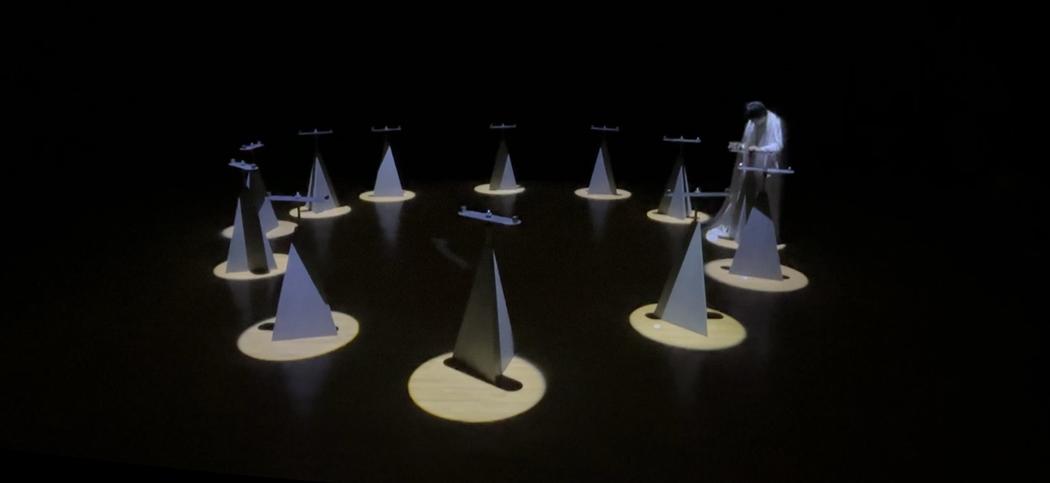
Have audience reactions ever shifted the direction of a performance or inspired changes in future works?
In Moonrise Sunset, not really. The seating I arranged placed the audience on both sides of the space, at some distance from the devices, which limited the possibility of direct interaction.
However, in other works, audience reactions have indeed influenced the performance. Performance art is inherently interactive, and the immediacy of the audience can sometimes alter the rhythm or atmosphere of a piece. This is, for me, one of the most compelling aspects of performance art—the audience is never just a passive receiver but part of the work’s becoming. In the future, I also want to explore ways for the audience to more directly touch or intervene in my works, allowing their bodies and perceptions to enter the performance itself.

Leave a Reply